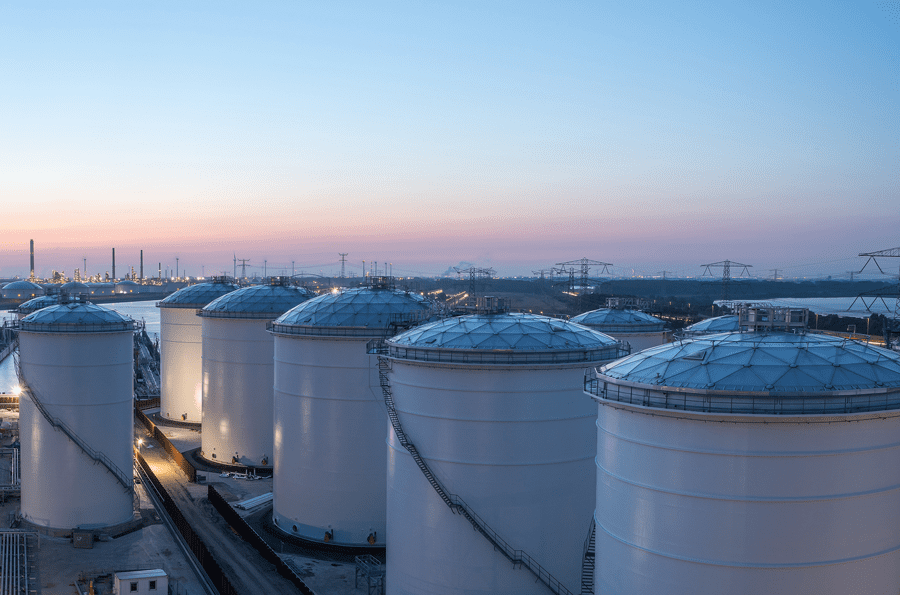For the petroleum industry, there are two facts on the ground – environmental pressures are on the rise, and oil isn’t going away anytime soon. With petroleum products likely to be a major part of the energy mix for years to come, industry leaders and managers find themselves performing a high-wire act, balancing environmental stewardship and business performance. There are many reasons for the industry to “go green” – regulators, communities, employees (especially younger ones) and many investors demand it. But green solutions can be costly, and investors and the C-suite also expect the business to perform. Is it possible to do good for the environment and do well at the same time?
Indeed, it is, and one of the best answers to the question is right under your nose. The storage tank, one of the most basic pieces of oil and gas equipment, can in fact be an active, strategic partner, providing cost efficiencies, enhanced safety and sharply reduced environmental risk.
The key is to realize that a tank can be, and should be, much more than just a steel container. There are two ways to turn it into an economic performer. One is through a comprehensive maintenance and repair routine. The other is to design the tank strategically and holistically – to build it from the start with environmental and business performance in mind.
A holistically designed, high-performance tank can deliver against environmental and business goals, which are, in fact, closely related. Spills, leaks and evaporation – the main environmental risks – also represent waste that saps revenue. Designs that can reduce these losses, and that increase the working capacity of the tank, can protect the environment, enhance reputation and contribute significantly to the bottom line.
Let’s look at what goes into designing a tank for performance.
Why Does Design Matter? Tank Inefficiency is the Root of All Problems
There’s a simple reason why many traditional storage tanks don’t perform: They are inefficient. When a tank is not designed holistically, many end users target nominal tank capacities and tolerate inefficiencies in utilization and environmental performance simply because they are not aware there are more efficient ways to configure the tank. They end up with traditionally configured storage tanks that may be “the way they’ve done it before,” but that result in evaporative product losses, poor capacity utilization and frozen inventory, leading to environmental damage as well as financial losses.
Performance Design Starts with the Basics – Business Goals and Site Considerations
To address those problems through design, it’s necessary to start with the basics: business requirements and the physical realities of the site itself. Leaders and facilities managers should review:
- Business considerations: How much total storage is needed? How should it be broken out by product type and batch size?
- Site considerations: How much total land is available? Are there factors such as easements, access and the presence of circulation or piping that will dictate how the tanks are sized or laid out? What is the soil-bearing capacity? Can it be improved? What is the prevailing weather? High winds and temperatures cause significant levels of evaporation from external floating roof tanks.
Fundamental Design Choices Determine Tank Performance
With the answers to those questions in hand, it’s possible to move on to the design phase. There is no one right answer. The choice of options will depend on site and business specifics. But the fundamental choices include:
- The proportions of the tank. Given the same storage capacity, a taller tank on a smaller base performs better. Reducing the area of the tank and increasing its height reduces emissions-driving perimeter and dead stock volume, thereby reducing emissions and improving working capacity, which often translates directly into increased revenue or, at a minimum, operational flexibility.
- Putting a lid on it. This is a basic choice. Roofed tanks – no matter the type of roof – perform better than open-top tanks. There is much less product loss and environmental risk from evaporation. Roofed tanks are particularly beneficial in hot and/or windy environments as these factors drive evaporative product loss. In addition, the working capacity of a covered tank with a low-profile internal floating roof (IFR) is greatly improved versus an external floating roof, with its deep profile and mandatory secondary seal. Roofs help both the business and the environment.
- The choice of roof. This is arguably the most important design choice. Several types of roofs can be installed. There are many parameters and subcategories. The right choice will be specific to the product being stored and to the site. Among the considerations: A self-supporting roof eliminates columns that take up space and cause seepage at the top and the base. Welded instead of bolted construction eliminates seams where evaporation can occur.
 The advantages of a floating roof support system. By utilizing suspended IFRs, leg penetrations (emissions sources) can be eliminated, and roof positions can also be adjusted from outside the tank, which improves personnel safety.
The advantages of a floating roof support system. By utilizing suspended IFRs, leg penetrations (emissions sources) can be eliminated, and roof positions can also be adjusted from outside the tank, which improves personnel safety.
By the Numbers: Examples of Performance Impact
What specific performance benefits result from these design choices? An exhaustive list is not possible; there are too many variables. But some illustrative examples are possible.
- Roof choice: Simply covering a typical 120-foot-diameter gasoline tank (storing RVP 10 gasoline at 24 cycles per year) can reduce wind effect losses by nearly 13,000 pounds per year. The use of a self-supported roof can reduce “column penetration” seepage and evaporation and increase the yield in the same tank by nearly 3,000 pounds per year. Suspending the internal floating roof to eliminate “leg penetration” seepage by another approximately 3,000 pounds per year. Welded construction reduces between 5,000 and 8,500 pounds in losses depending on the techniques used.
- Tank proportion: Tank proportion works with other factors to produce results. Here’s how it breaks down if the design shifts from a 120 x 48-foot tank to a 107 x 60-foot tank. With a steel floating roof – internal or external – the taller tank reduces emissions by six percent for gasoline (but only slightly for crude oil). With design measures to reduce heel – unusable product left in the bottom of the tank – the taller tank produces more usable inventory to the tune of approximately $133,000 per year for crude oil and nearly $205,000 for gasoline (based on pricing of $110/Bbl for crude oil and $4.05/gallon for wholesale gasoline). With design measures to increase working capacity, the taller tank adds an additional 2.5 percent.
Good Design Produces Additional Benefits
In addition to the cost and environmental benefits, holistic tank design can also provide:
- Enhanced safety: Leaking, outgassing and evaporation all translate into costs but also risks; mishaps endanger the people who work in your facility. Tanks that reduce spills and other product escapes improve safety as well. One roof choice that often delivers strong performance – an aluminum dome with a suspended floating internal roof – also enhances safety because personnel do not have to enter the tank to set the level of the roof.
- Reduced need for maintenance: Designs that utilize corrosion-resistant materials, such as aluminum and fiberglass (GRP), also reduce long-term costs of ownership due to reduced maintenance.
What’s the Right Design Choice? It Depends – But There are Principles to Consider
Again, it’s difficult to generalize about tank design, but some general principles and approaches apply:
- Consider building taller if soil bearing capacity allows. The performance of taller, narrower tanks is consistently better across a range of other design variables.
- Design to minimize waste. A major contribution of holistic tank design is increased working capacity and the reduction of environmentally harmful product loss.
- Choose the right roof. Different roof designs have differing impacts on emissions performance and perform differently in varying weather environments. They also influence the selection of internal equipment. Roof design arguably needs more attention than any other design factor.
Experienced tank designers and floating roof providers can help you think through all the other variables and tank design choices. Consultation can help you shape the design to the demands of your specific tank project.
The fundamental point to remember is this: Tanks can make your facility greener, safer and more profitable. Tank design is one of the most effective ways to do well for your business and do good for the environment.
Headline photo courtesy of Jeff Eickhoff.
Jeff Eickhoff has worked for HMT, a global leader in above ground storage tank solutions, for 12 years and manages the company’s international business. He serves on API’s SCAST, Subgroup Fabrication. Eickhoff co-leads HMT’s technical product-training programs and has presented conference papers at ILTA, NISTM and API on emissions, floating roof and seal design, domes, composite IFRs and seal inspection.
Oil and gas operations are commonly found in remote locations far from company headquarters. Now, it's possible to monitor pump operations, collate and analyze seismic data, and track employees around the world from almost anywhere. Whether employees are in the office or in the field, the internet and related applications enable a greater multidirectional flow of information – and control – than ever before.




